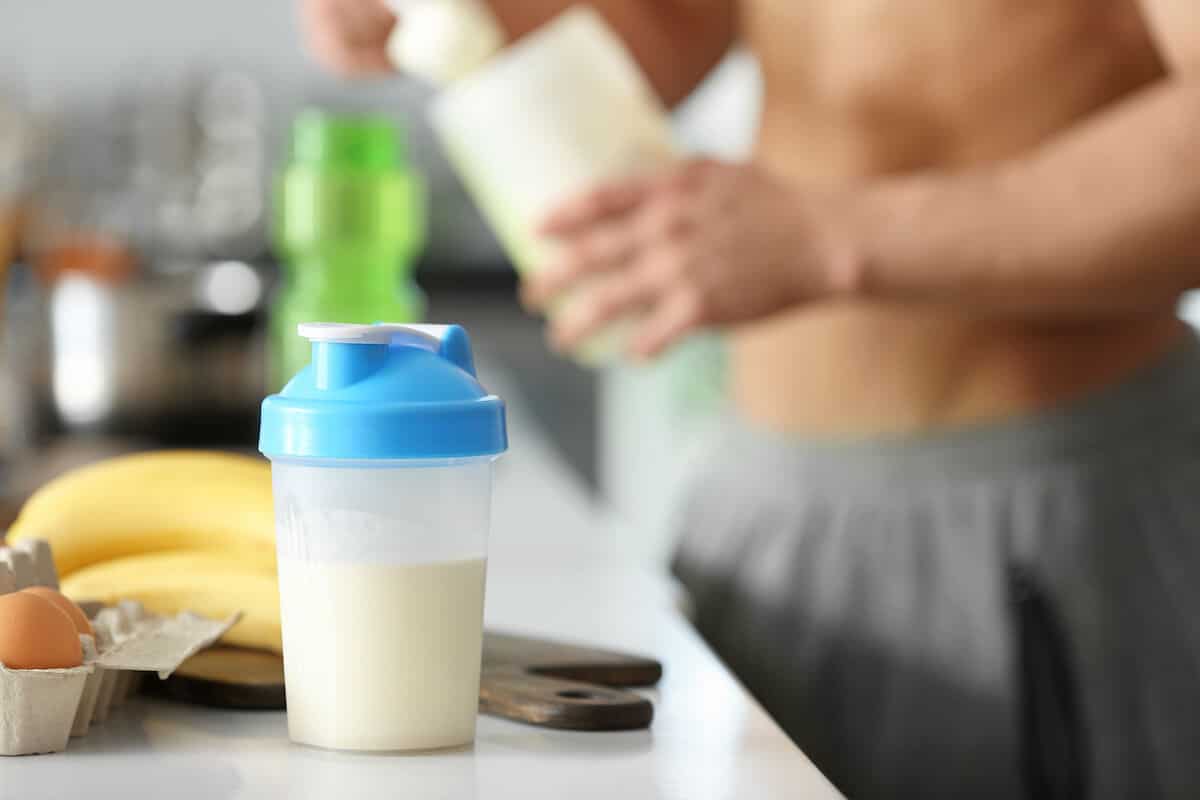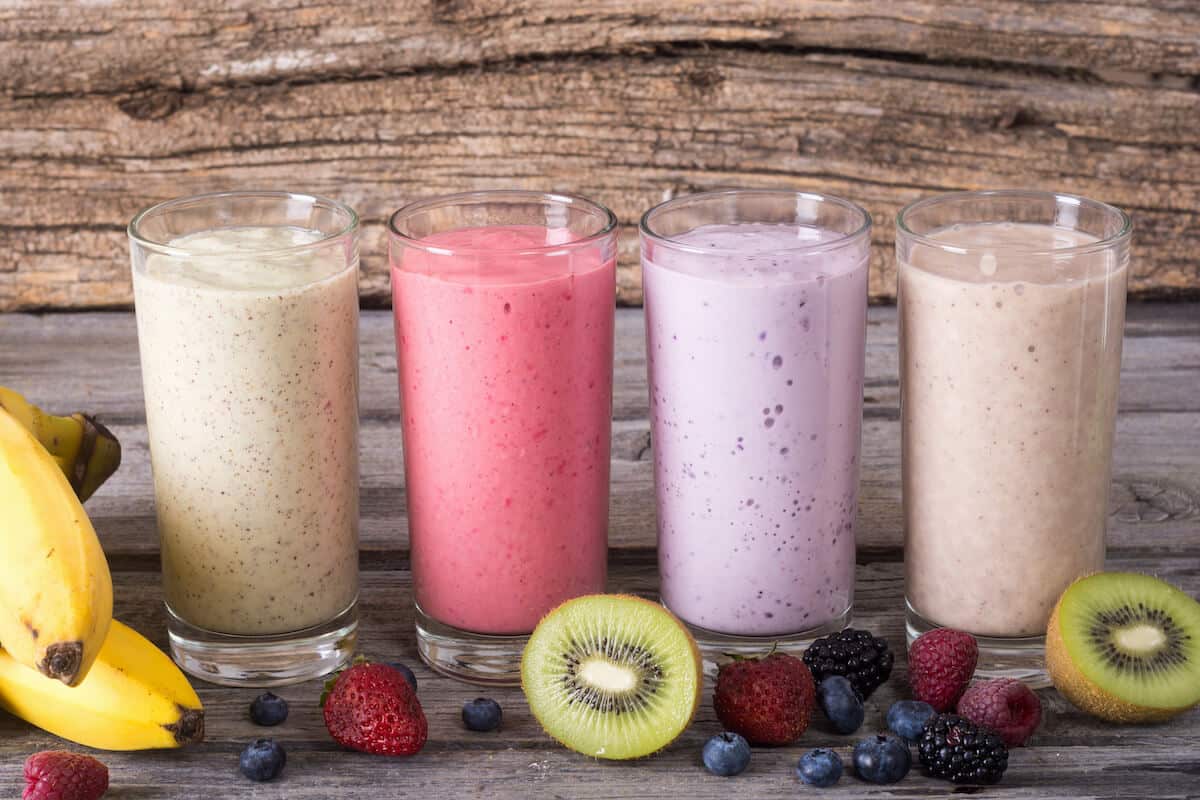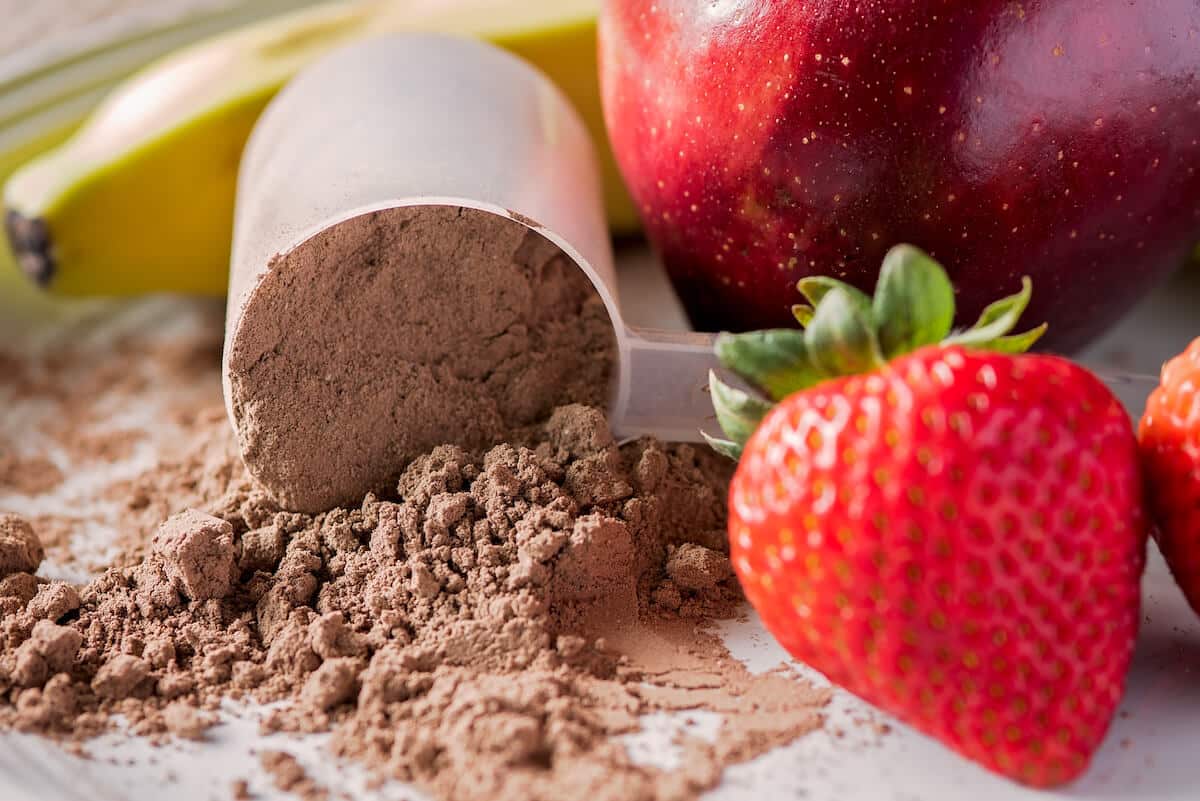
15 Nov How Many Protein Shakes a Day Is Healthy?
Protein powder is one of the most convenient ways to supplement your daily protein intake and meet your body’s protein needs. High-quality protein supplements are considered beneficial, and there’s no hard limit for how many protein shakes a day are safe.
This guide examines what role protein shakes should play in meeting your daily protein requirement. We’ll also look at how many grams of protein the average person needs daily to support muscle growth and reach their fitness goals.
Protein 101

The human body requires a balanced diet of three macronutrients (macros) to function and maintain health: protein, carbohydrates (carbs), and fats.
Protein is the most important of these nutrients for building muscle. During digestion, your body breaks it down into building blocks known as amino acids, which it then uses to maintain your muscles, bones, and organs.
Dietitians usually divide amino acids into essential amino acids and non-essential amino acids. This qualification is because your body needs essential amino acids from food sources but can make non-essential amino acids internally. Essential amino acids are key to muscle protein synthesis, which refers to the process of building new lean muscle and repairing muscle damage from resistance training.
How Much Protein Do You Need?
The amount of protein you need daily depends on your athletic activity and body weight. Contrary to popular belief, protein is just as crucial for women as it is for men. Here are the standard protein intake recommendations:
- Average activity levels: Those with average activity levels need around 0.8 grams of protein per kilogram of body weight daily. (Around 0.36 grams of protein per pound of body weight.)
- Athletic activity levels: People with athletic activity levels need a minimum of 1.2 grams of protein per kilogram of body weight daily. (Around 0.54 grams of protein per pound of body weight.)
A licensed nutritionist can help you find the ideal daily intake based on your activity levels and health. It’s important to note that eating extra protein (over your recommended intake) can stress your kidneys and liver as they process and excrete what it doesn’t need. Too much protein can also cause unwanted weight gain.
Calorie and nutrient tracking apps (e.g., MyFitnessPal) can ensure you’re getting enough protein, which is helpful when trying to build muscle mass. These apps can also help you keep track of your daily calories, which can help you reach weight loss, maintenance, or gain goals.
Protein-Rich Foods and Types of Protein Powder
When a source of dietary protein contains all nine essential amino acids, it’s known as a complete protein.
Whole food sources of complete protein include animal proteins like beef, pork, chicken, fish, eggs, cheese, and milk, and plant proteins like soybeans, green peas, quinoa, and soy products (e.g., tofu, tempeh, soy milk, etc.). In addition, protein powders can help you increase the amount of protein in your diet and serve as convenient meal replacements.
Common types of protein powder include whey protein, casein protein, pea protein, and soy protein. Less common protein sources in protein supplements include brown rice, egg whites, and hemp seeds.
Protein powders are also often broken down into pre-workout and post-workout categories. This refers to whether you use the supplement before or after you exercise. Pre-workout protein drinks are usually designed to energize your body. And post-workout supplements are typically designed to assist with muscle building and repair.
Best Protein Powders
Protein powders made with Ingredient Optimized protein have higher bioavailability, which means that your body can absorb as much protein as possible from the supplement. Conversely, low-quality protein powders and those without Ingredient Optimized protein may have lower bioavailability, meaning that your body might not absorb the amount of protein listed on the label.
Here are some great options made with Ingredient Optimized protein:
- Animal source: Performix ioWHEY Protein
- Animal source: Kaged Muscle Clean Meal
- Plant-based source: Kaged Muscle Plantein
- Plant-based source: Myprotein The ioPEA
Dietary Goals: How Many Protein Shakes a Day

To gain muscle, you need a diet that provides enough protein to support muscle repair and growth. And while the ideal high-protein diet would get adequate protein from whole foods like chicken breast, eggs, and fish, that’s not always possible.
Time is an issue for some — without extensive meal prep, making enough meals daily to meet their protein needs can be challenging. For others, it could be appetite — eating solid foods too close to a bodybuilding routine might not be appetizing, or it could cause an upset stomach.
Whatever the reason, there’s nothing wrong with relying on protein shakes to supplement your daily protein intake. But how many protein shakes a day is healthy and how many is too much?
The standard recommended dosage for protein powder is around two one-scoop servings per day. Research on possible side effects of consuming more than two servings per day is limited.
Here are some ways that you might divide your protein shakes throughout the day:
- Meal replacement shake for breakfast, protein shake with lunch
- Protein shake with breakfast, meal replacement shake for lunch
- Protein shake as a snack after a morning workout, protein shake as a snack before dinner
Meal replacement shakes typically contain a more complete nutrient profile, whereas protein shakes supplement your body at a meal or between meals. You can divide your two shakes any way you want and experiment with protein timing to find what makes your body feel best.
If you’d like to consume more than two protein shakes per day, consult a nutritionist or healthcare professional for guidance. Some professional athletes and bodybuilders may have more than two servings of a protein supplement daily to support high levels of physical activity. However, without a professional’s supervision, this could lead to deficiencies in your diet.
Other Ways to Increase Protein Intake
Meeting your protein requirements can be challenging, but there are other ways to increase your protein intake that don’t involve adding another protein shake. Including high-protein whole foods in every meal is helpful and will usually be enough to help you meet your goals, especially in conjunction with protein supplements.
Here’s a breakdown of common sources of protein that you can add to each meal:
- Dairy: cottage cheese, Greek yogurt, milk, and cheese
- Meats: chicken, beef, and pork
- Seafood: fish and shellfish
- Other animal proteins: eggs
- Plant-based complete proteins: Chia seeds, green peas, edamame, tofu, tempeh, soy milk, soy nuts, quinoa, hemp seed, nutritional yeast, spirulina, and plant-based meat substitutes
In addition to eating high-protein foods at every meal, you can add high-protein foods to your protein shakes for more protein in each supplement. For example, 100 grams of Greek yogurt and 3 tablespoons of hemp seeds added to a protein shake can boost the protein content by about 20 grams.
It’s essential to break up your protein intake throughout the day. Ideally, you’d aim for an equal amount of protein in every meal instead of eating it all in one or two sittings.
Use Protein Shakes to Enhance Your Diet

Deciding how many protein shakes a day is right for your diet depends on your goals, activity level, and weight. Work with a healthcare professional or licensed nutritionist for the best results.
Remember, protein shakes are a dietary supplement — they’re not intended to replace whole-food protein sources. And always look for high-quality supplements that use Ingredient Optimized protein to ensure you’re getting the most protein for your money.


